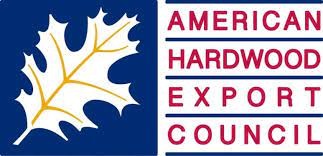Gutchess Lumber Co., Inc.’s “Words from Woods” series consists of a monthly article written by our fifth-generation President and Chairman Matthew Gutchess.
Walking a woodlot with an experienced forester is a fascinating experience. Rather than just looking at a snapshot of the various sights and sounds and smells, trees and herbs, sunlight and shade, birds, insects and other wildlife, paths, fences, and other marks of human presence as they exist today, one can imagine the woods as they might have existed long ago. Perhaps better yet, one can anticipate the potential those very same woods hold for future growth and diversity, depending upon the exact plan chosen for forest management.
Even before cruising my timber, I knew my primary objective would be to build long-term value in my woodlot. The potential growth and health of the forest for many decades to come would determine all of the harvesting activity. For a tree to be considered, the removal must thin the stand (allowing for rapid growth of new or remaining trees), be at risk of over-maturity and decline prior to my next anticipated harvest in approximately 15 years, or be an ash tree vulnerable to imminent attack from the emerald ash borer. (NOTE: we did leave 2-3 high quality ash trees well apart from one another deep in my woods in the unlikely event that low species density would help the ash to survive the invasive insect, unfortunately almost certain to enter my woodlot over the next few years.)
John Mueller, a 33-year veteran forester who manages Cortland’s division of Natural Resources at Gutchess Lumber, cruised the woods with me and helped me to weigh my options. From walking dozens of company woodlots with John many years earlier, I had complete confidence in his ability to assess the pros and cons of marking this tree for harvest, or leaving that tree for a potential future cycle. John pointed out subtle factors I would have missed, such as leaving effective barriers to protect vulnerable growing trees against sudden exposure to wind damage, opening the forest canopy to allow sunlight, water, and nutrients for the young seed sources already established, and determining optimal equipment access/egress from the woods.
Invasives and beech and black locust management—species I plan to discuss further in future blog posts—were also carefully considered. We decided to spray invasives in the early fall ahead of our projected harvest in the winter, through an experienced licensed contractor. The spray turned out to be effective, suppressing the invasive garlic mustard and swallow-wort for a year or more while allowing me a practical opportunity to manage my surviving and more scattered honeysuckle bushes by hand (a project which I wrote about in my August post, and which has given me a satisfying sense of accomplishment).
It would be unrealistic to expect to solve all of my woodlot’s problems through one harvest, but John’s active forest management plan created the only truly practical opportunity for complete future recovery. Sugar maple and other beautiful natives could regenerate on this fantastic growing ground by leaving treetops in the woods, protecting against deer browse and restoring critical nutrients back into the soil. John’s experience and careful thought process set the stage for all of this to happen.
John and I selected and marked the trees later in the fall, tallying culls (with no direct economic value) and estimating the board footage volumes which would go to the sawmill. Year-end was unseasonably warm but by mid-January of 2018, my ground was frozen sufficiently to begin the harvest.
Matt

